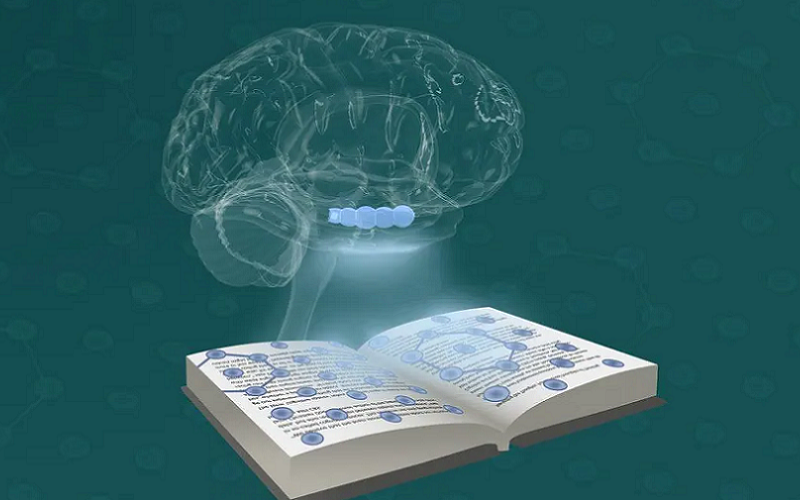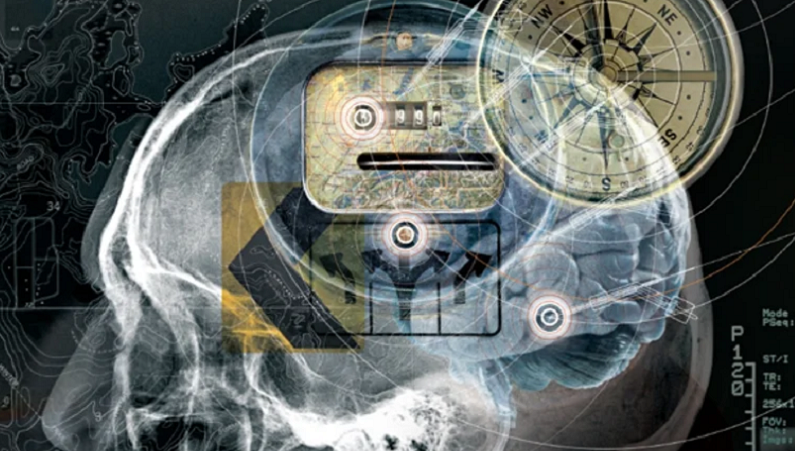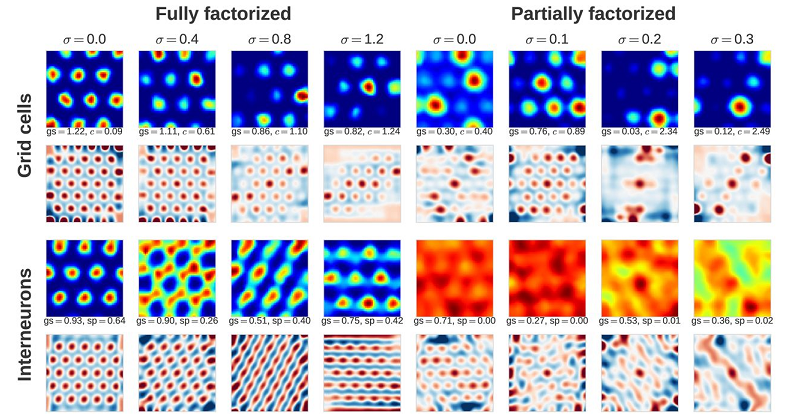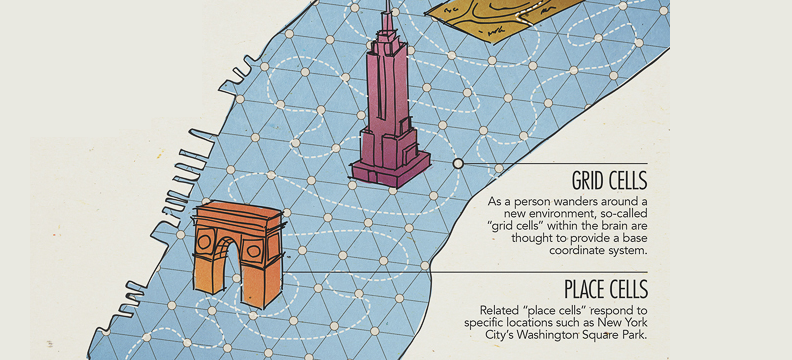
Navigating through the intricacies of our brains, one marvels at the sophistication and precision of its operations. Central to this cognitive brilliance is our ability to recognize, remember, and navigate spaces, a mental GPS if you will. But how does our brain achieve this phenomenal feat? Enter the world of place cells and grid cells, the heroes of this cognitive tale. These specialized types of neurons function as the linchpins in our brain’s navigation system, enabling us to map our environment and position ourselves within it.
Contents
Introduction
The mystery of the human brain is one that scientists have been endeavoring to unravel for centuries. One particular area of fascination is our brain’s remarkable capacity to navigate through spaces, both familiar and unfamiliar, with such precision and accuracy. In this context, understanding the role of neurons, the core components of the brain, becomes paramount. Two specialized types of neuroons – place cells and grid cells – play a crucial role in our brain’s navigational abilities.
Before we dive deep into the roles of place cells and grid cells, it is essential to understand the general context of the brain’s navigation system. Our brains possess an extraordinary ability to recognize, remember, and navigate through spaces – a capability that can be likened to a Global Positioning System (GPS).
This brain GPS, much like the technological GPS we’re familiar with, helps us create cognitive maps of our environment and navigate through them efficiently. However, unlike its technological counterpart, which relies on satellites and digital data, the brain’s GPS depends on the complex interaction of specialized neurons.
The study of neurons, specifically place cells and grid cells, in the context of spatial navigation is not a mere academic exercise. Our understanding of these specialized cells has profound implications ranging from advancing our knowledge of the brain’s cognitive abilities, shedding light on various neurodegenerative diseases, to informing the development of neuroprosthetics and robotic navigation systems.
Basics of Brain Function and Neurons
The brain, often compared to a supercomputer, is a marvel of nature that performs a wide array of functions with exquisite precision. At the heart of this complex machine are neurons, the basic building blocks of the brain. Understanding neurons and their roles is essential for grasping the deeper nuances of brain function, including the brain’s navigational capabilities.
Brief Overview of Neurons
Neurons, also known as nerve cells, are the primary components of the nervous system, which includes the brain, spinal cord, and peripheral nerves. These specialized cells are designed to transmit information to other nerve cells, muscle, or gland cells. The core elements of a neuron include the cell body (which contains the nucleus), dendrites (branch-like structures that receive messages from other neurons), and the axon (a long, thin structure that transmits signals to other neurons).
Different Types of Neurons and Their Functions
Neurons come in many shapes and sizes, and their functions are as diverse as their structures. Broadly speaking, there are three types of neurons: sensory neurons, motor neurons, and interneurons. Sensory neurons relay information from sensory receptors to the brain and spinal cord, motor neurons transmit instructions from the brain to the body’s muscles, and interneurons act as the bridge, connecting sensory and motor neurons and facilitating communication within the nervous system [1].
The Process of Neural Communication in the Brain
Neural communication is the process through which neurons exchange information. This is primarily achieved through an electrochemical process. When a neuron is stimulated, it generates an electrical signal (action potential) that travels down the axon to the synapse (junction between two neurons).
This signal triggers the release of chemicals known as neurotransmitters, which cross the synapse and bind to receptors on the receiving neuron, thereby transmitting the message. This complex process of neural communication underlies all brain functions, including the intriguing abilities of spatial recognition and navigation that we attribute to our brain’s ‘GPS’.

Introduction to Place Cells and Grid Cells
The world of neurons is extensive, with each type having its unique attributes and functions. However, our journey into the brain’s GPS takes us to two types of neurons that are indispensable to our understanding of the brain’s navigational prowess – place cells and grid cells. These specialized neurons hold the key to our ability to recognize and navigate spaces, creating and interpreting cognitive maps of our surroundings.
What Are Place Cells?
Place cells are a unique type of pyramidal neuron found in the hippocampus, a region of the brain crucial for learning and memory. Their defining feature is their preferential activation when an individual is in a specific location in the environment, known as the ‘place field.’
Where Place Cells are Located
Place cells reside in an area of the brain called the hippocampus, specifically in a region known as the CA1 and CA3. The hippocampus, located in the temporal lobe, is widely recognized for its pivotal role in memory formation and spatial navigation [2].
How Place Cells Work
When you move around an environment, different sets of place cells fire, depending on your location. Each place cell is sensitive to a specific area of the environment, and when you’re in that area, the cell fires action potentials. As you navigate different environments, distinct sets of place cells get activated, which is believed to help the brain construct a cognitive map of different locations.
What Are Grid Cells?
Grid cells, like place cells, are neurons that provide a sense of location, but they do so in a fundamentally different way. These cells are primarily located in the entorhinal cortex, a region adjacent to the hippocampus.
Where Grid Cells are Located
Grid cells are predominantly found in the entorhinal cortex of the brain, a region that feeds information to the hippocampus. This area, nestled on the medial temporal lobe, serves as a hub in the widespread network for memory and navigation.
How Grid Cells Work
Unlike place cells, which fire when you’re in specific places, grid cells fire at multiple locations, forming a grid-like pattern of equilateral triangles when visualized. As you move through space, these cells generate a continuous, periodic activation pattern, almost like a coordinate system or ‘grid’ overlaid on the environment. This grid allows for precise self-location and pathfinding – a crucial element of the brain’s navigational system [3].

Place cells serve as critical components of our brain’s navigational system, providing a sort of internal GPS that helps us understand our position in space. Understanding their discovery and their function in creating a cognitive map is key to appreciating their contribution to spatial navigation.
Discovering Place Cells
Place cells were first discovered in the 1970s by John O’Keefe and Jonathan Dostrovsky while they were studying the hippocampus in rats. They found that specific neurons in the hippocampus would fire when the rat was in a particular location in its environment. These neurons, which they dubbed “place cells,” were recognized for their distinctive firing patterns and their contribution to our understanding of the brain’s navigation system was acknowledged when O’Keefe was awarded the Nobel Prize in Physiology or Medicine in 2014 [4].
Place Cells: Creating a Cognitive Map
Place cells contribute significantly to the creation of a cognitive map, a mental representation of the layout of one’s environment.
The Concept of a Cognitive Map
A cognitive map is an internal mental representation of the physical layout of one’s surroundings. This map allows an individual to understand their position in space, plan routes, and navigate effectively. Just as a cartographic map helps you navigate through a city, a cognitive map guides you through your physical environment.
How Place Cells Contribute to This Map
As you move through your environment, different place cells fire depending on your location. Each place cell has a unique ‘place field,’ and when you move into that field, the cell fires. By having a unique set of place cells for different locations, the brain can create a detailed and dynamic map of various environments. When you return to a known environment, the same place cells reactivate, enabling the brain to recognize the space [5].
Experimental Evidence Supporting the Role of Place Cells
Several studies have provided evidence for the role of place cells in spatial navigation. One key study involved tracking the activity of place cells in rats as they navigated through a maze. The researchers found that the cells fired consistently when the rats were in specific locations, confirming that place cells help create a cognitive map of the environment. Moreover, disruptions to the hippocampus, where place cells reside, have been found to impair the ability to navigate, further supporting the essential role of place cells in spatial cognition.

While place cells provide a foundation for the brain’s cognitive map, the grid cells offer another layer of intricacy to our internal navigation system. Unraveling the discovery, function, and the distinctive “grid-like” activation of these cells sheds light on how our brain creates a metric for the cognitive map.
Discovery and Properties of Grid Cells
Grid cells were discovered by Edvard Moser and May-Britt Moser, a pair of Norwegian neuroscientists, while conducting research on rat brains in the early 2000s. This groundbreaking discovery, revealing that these cells fire in a grid-like pattern when an animal moves through space, led to the Mosers being awarded the Nobel Prize in Physiology or Medicine in 2014 [6].
Grid Cells: Providing the Metric for the Cognitive Map
Grid cells are key contributors to the brain’s navigational system. Their primary function is to provide a spatial metric for the cognitive map, helping the brain to gauge distances and directions.
Understanding the “Grid-Like” Firing Patterns
Grid cells fire at multiple locations in the environment, and these firing locations form a repeating, grid-like pattern that covers the entire explorable space. This grid consists of equilateral triangles that tessellate to form a pattern resembling a honeycomb. The remarkable consistency of this pattern allows grid cells to provide a metric for space, effectively functioning as a coordinate system for the cognitive map.
How Grid Cells Contribute to This Map
Grid cells, with their precise grid-like firing pattern, contribute to the cognitive map by helping to track the individual’s position and velocity, even in the dark or in the absence of external reference points. This is possible due to the grid cells’ periodic firing, which creates an internal reference frame that stays consistent across different environments and over time. This stable representation is what allows us to gauge distances and directions accurately, enabling effective navigation.
Experimental Evidence Supporting the Role of Grid Cells
Research has robustly substantiated the role of grid cells in spatial navigation. Notably, experiments involving rats navigating through different environments have shown that the firing pattern of grid cells remains consistent, demonstrating their crucial role in providing a stable spatial metric. Additionally, studies involving lesions or disruptions to the entorhinal cortex, the home of grid cells, have demonstrated that impairments to this region can significantly disrupt an animal’s ability to navigate, further underscoring the essential role of grid cells in spatial cognition.
While place cells and grid cells each play a critical role in spatial navigation, their true magic lies in how they interact. Working in harmony, these two types of neurons create a sophisticated, precise, and flexible navigation system that allows us to find our way through our environment with remarkable ease.
How Grid Cells and Place Cells Work Together
The interplay between grid cells and place cells is key to the successful operation of our brain’s navigational system.
The Role of Grid Cells in Informing Place Cells
Grid cells provide a type of internal coordinate system that serves as a spatial reference frame. The grid-like firing pattern of these cells represents different spatial locations and provides a consistent measure of distance and direction. This information is passed to the hippocampus, where place cells reside. There, it helps to inform the position-specific firing of the place cells, essentially providing the raw spatial data that place cells use to define their specific ‘place fields.’
The Role of Place Cells in Refining the Grid Cell Input
The input from grid cells forms the basis for the place cell’s location-specific firing. However, place cells also incorporate additional information, such as sensory cues from the environment, to refine their firing patterns. This additional information allows place cells to adapt their firing to changes in the environment, ensuring that the cognitive map remains accurate and up-to-date even when the environment changes [7].
Experimental Evidence Supporting the Interaction of Place and Grid Cells
Numerous experimental studies have documented the interaction between grid cells and place cells. For instance, researchers have observed that damaging the entorhinal cortex, where grid cells are located, leads to a disorganization in the place fields of place cells, suggesting that place cells rely on grid cells for spatial information.
Furthermore, studies have shown that changes in the grid cell’s firing pattern due to environmental changes are mirrored by alterations in the place cell’s firing, further supporting the idea that these two types of cells work in harmony to create our cognitive map.
References
[1] Learning place cells, grid cells and invariances with excitatory and inhibitory plasticity
[2] Place cells, grid cells, and the brain’s spatial representation system
[3] Place Cells, Grid Cells, and Memory
[4] How mammals navigate: place and grid cells
[5] How Do We Find Our Way? Grid Cells in the Brain
[6] Place, space and memory cells
[7] Place Cells, Grid Cells, and the Brain’s Spatial Representation System

